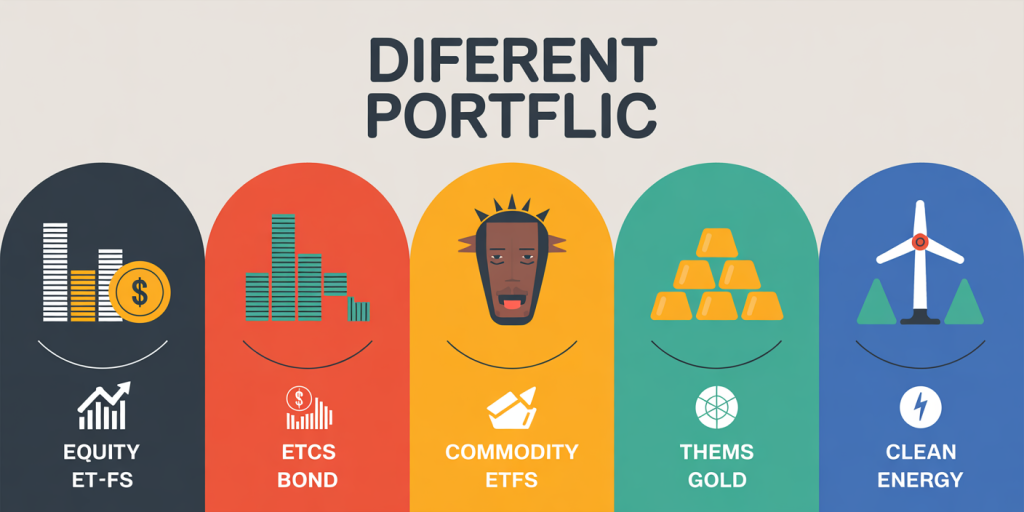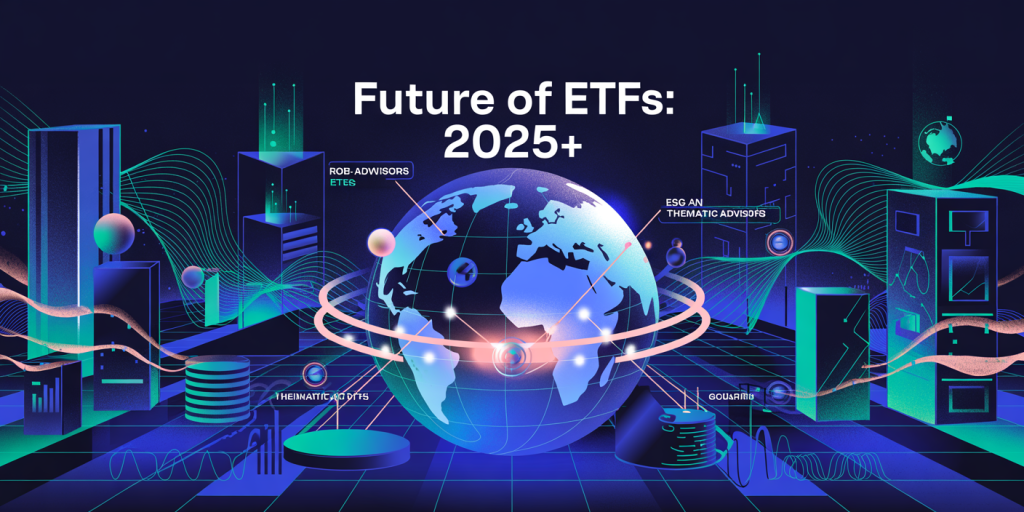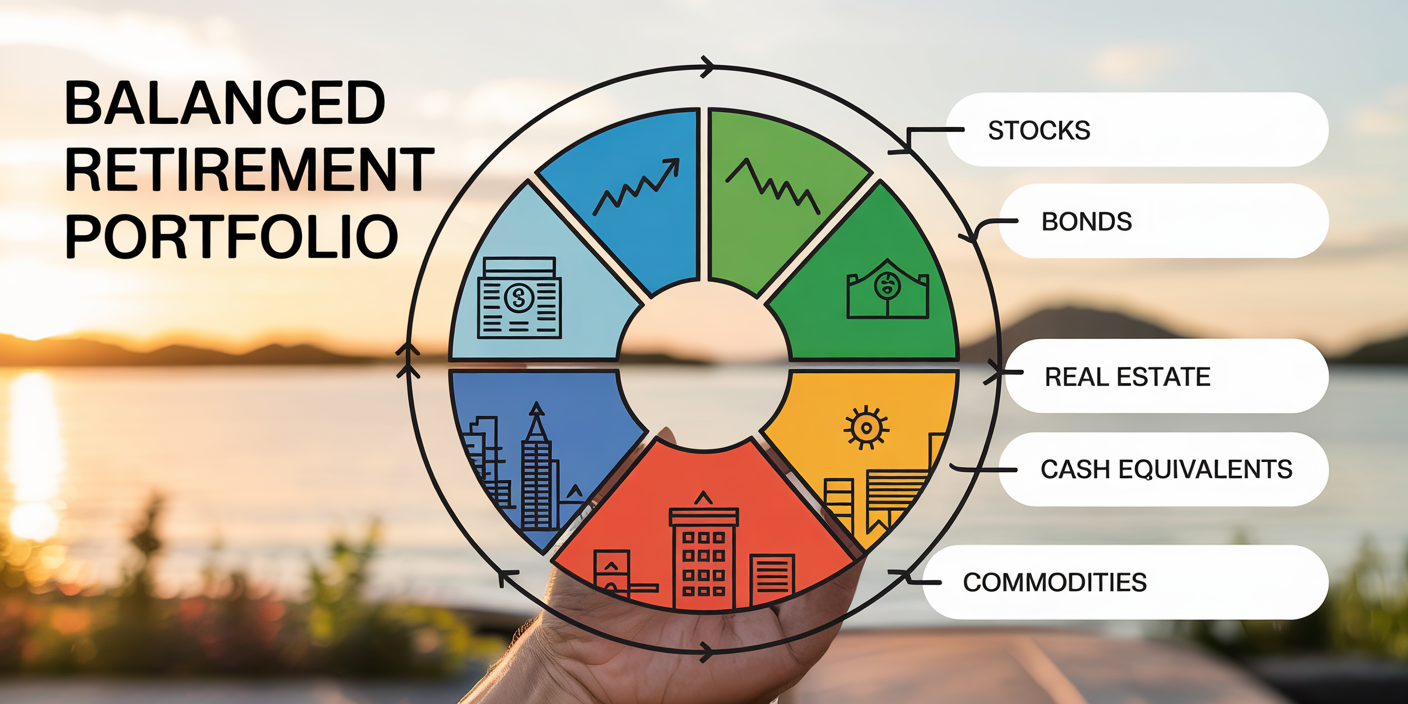Complete Beginner’s Guide to Investing in ETFs in 2025
Anúncios
Exchange-Traded Funds (ETFs) have become one of the most popular investment vehicles globally, especially for beginners seeking a diversified and cost-effective way to enter the financial markets. As of 2025, ETFs have expanded dramatically in variety and sophistication, providing opportunities to invest across different asset classes, sectors, and regions. According to Morningstar data, global ETF assets surpassed $11 trillion in 2024, highlighting their growing acceptance and trust among investors. This guide aims to equip beginners with essential knowledge, practical tips, and insights on how to start investing in ETFs successfully in 2025.
ETFs blend the benefits of mutual funds and individual stocks, offering liquidity, diversification, and low fees. Their ease of trading on stock exchanges makes them accessible to retail investors with varying budget sizes. However, successful investing in ETFs requires an understanding of types, strategies, costs, and market trends. This comprehensive guide walks you through the fundamentals, practical steps, and forward-looking considerations for ETF investing in the current financial landscape.
What Are ETFs and How Do They Work?
Anúncios
ETFs are investment funds that hold a collection of assets such as stocks, bonds, commodities, or a mix, and trade on stock exchanges like individual shares. Unlike mutual funds, which price once a day, ETFs trade throughout the day at market-driven prices, providing flexibility for investors.
For example, the SPDR S&P 500 ETF (ticker: SPY) tracks the performance of the S&P 500 index. By buying one share of SPY, an investor gains exposure to 500 large U.S. companies without having to buy each stock individually. This is ideal for beginners who want to diversify their portfolio with limited capital.
Anúncios
The mechanics behind ETFs involve authorized participants who create or redeem ETF shares to align the fund’s holdings with the underlying index or assets. This process helps keep the ETF price close to its net asset value (NAV), ensuring transparency and efficiency.
Types of ETFs to Know
There are several types of ETFs, each catering to different investment goals: Equity ETFs: Track stocks or specific sectors. Examples include technology ETFs like the Invesco QQQ, which follows the NASDAQ-100. Bond ETFs: Invest in government, corporate, or municipal bonds. The iShares Core U.S. Aggregate Bond ETF (AGG) is a popular choice. Commodity ETFs: Track commodities such as gold or oil. The SPDR Gold Shares (GLD) offers exposure to gold. Thematic ETFs: Focus on emerging trends like clean energy or artificial intelligence. For instance, the Global X Lithium & Battery Tech ETF (LIT) targets the lithium supply chain.

Understanding these types helps investors align their portfolios with personal risk profiles and market views.
Why ETFs Are Ideal for Beginners in 2025
ETFs provide several key advantages that suit beginner investors well. First, the cost advantage is significant. According to Statista, the average expense ratio of ETFs was just 0.22% in 2024, compared to about 0.74% for actively managed mutual funds. Lower fees translate to greater compounded returns over time.
Moreover, the ability to trade ETFs like stocks means beginners can easily enter and exit positions according to their risk tolerance and market outlook. This flexibility has become more relevant in 2025, with the rise of commission-free trading platforms such as Fidelity and Charles Schwab, further lowering the cost of investing in ETFs.

Another important consideration is diversification. ETFs allow investors to spread their money across hundreds or thousands of securities, reducing idiosyncratic risk. For example, investing $1,000 in an ETF like Vanguard Total Stock Market ETF (VTI) offers exposure to the entire U.S. equity market, which is much safer than purchasing stocks individually.
Practical Example: Comparing Direct Stock Purchase vs ETF Investment
| Investment Type | Initial Capital | Number of Securities | Diversification Level | Average Expense Ratio | Trading Flexibility |
|---|---|---|---|---|---|
| Individual Stocks | $1,000 | 1-3 | Low | N/A | High |
| Broad Market ETF (e.g., VTI) | $1,000 | Approx. 4,000 | Very High | 0.03% | High |
| Sector-Specific ETF (e.g., XLK) | $1,000 | About 70 | Medium | 0.10% | High |
This comparison shows how ETFs offer diversified exposure with minimal effort and cost – a key reason they are recommended for beginners.
How to Choose the Right ETFs for Your Portfolio
Choosing ETFs can feel overwhelming given the thousands of options available worldwide. However, beginners can use a few straightforward criteria to identify suitable ETFs.
First, define your investment goals and risk tolerance. Are you investing for long-term growth, income, or capital preservation? For instance, a young investor aiming for growth might lean toward equity ETFs with exposure to technology or emerging markets. Conversely, a retiree may prefer bond ETFs or dividend-focused ETFs for income and stability.
Second, consider the ETF’s underlying index or strategy. Broad-market ETFs like the Vanguard Total Stock Market ETF (VTI) or the iShares MSCI Emerging Markets ETF (EEM) offer broad diversification. More specialized ETFs, such as thematic funds or leveraged ETFs, tend to be riskier and better suited for advanced investors.
Expense ratio is another key factor. Since fees eat into returns over time, selecting ETFs with lower expense ratios helps maximize long-term growth. Additionally, examine liquidity measures such as average daily trading volume and bid-ask spreads; highly liquid ETFs tend to have lower trading costs.
Case Study: Impact of Expense Ratios on Returns Over Time
Consider two ETFs that both start at $10,000 and grow at an equal pre-fee annual rate of 8% for 20 years:
| ETF Name | Expense Ratio | Final Amount after 20 Years |
|---|---|---|
| ETF A (0.50%) | 0.50% | $39,660 |
| ETF B (0.10%) | 0.10% | $45,260 |
The difference of 0.40% in fees leads to nearly $5,600 more in returns for the lower-cost ETF, illustrating why beginners should choose inexpensive funds.
Step-by-Step Process to Start Investing in ETFs
Starting your ETF investing journey involves a clear series of steps, even for complete novices.
First, open a brokerage account that offers access to a wide variety of ETFs and low or zero commission fees. Popular platforms in 2025 include Fidelity, Charles Schwab, Robinhood, and E*TRADE. Make sure the broker also has good educational resources and customer support.
Next, fund your account and decide how much you want to invest initially. Many ETFs have no minimum investment beyond the price of one share, which can range from $30 to $400 depending on the ETF. Fractional shares offered by brokers make it possible to invest smaller amounts, such as $50 or $100, allowing you to build a diversified portfolio gradually.
After selecting your ETFs based on research and your investment plan, place your buy orders during market hours. Beginners might use market orders for simplicity or limit orders to control purchase prices.
Finally, monitor your portfolio periodically and adjust as you gain experience or as your goals change. Rebalancing annually helps maintain your desired asset allocation, ensuring your risk exposure stays consistent.
Example of Creating a Diversified Starter Portfolio
| ETF Ticker | Fund Name | Allocation % | Objective |
|---|---|---|---|
| VTI | Vanguard Total Stock Market ETF | 50% | Broad U.S. equity exposure |
| AGG | iShares Core U.S. Aggregate Bond ETF | 30% | U.S. bond market for stability |
| EEM | iShares MSCI Emerging Markets ETF | 20% | Growth potential in emerging markets |
Such a simple portfolio blends growth and safety, ideal for beginners.
Common Mistakes to Avoid When Investing in ETFs
While ETFs are beginner-friendly, investors can still encounter pitfalls that jeopardize outcomes.
A common mistake is chasing past performance. Just because an ETF had spectacular returns last year doesn’t guarantee future success. For example, many cryptocurrency ETFs experienced extreme volatility in 2022-2024 due to regulatory changes and market sentiment shifts. Beginners should focus on consistent, reliable strategies like broad market exposure rather than trendy sectors.
Another error is neglecting expense ratios or hidden fees like bid-ask spreads. Buying an ETF with a low expense ratio but poor liquidity might increase overall costs when buying or selling shares. Always check the ETF’s average daily volume and spread statistics.
Overtrading is also prevalent among beginners who attempt to time the market. ETFs allow easy trading, but frequent buying and selling can erode returns and incur tax consequences. Instead, a buy-and-hold approach generally yields better long-term results.
Lastly, investors sometimes fail to diversify adequately or overconcentrate in niche ETFs. A well-balanced portfolio typically combines equity, fixed income, and possibly alternative ETFs depending on risk appetite.
Looking Ahead: The Future of ETF Investing in 2025 and Beyond
The ETF landscape continues to evolve rapidly. In 2025, technological advancements, regulatory changes, and investor behavior trends shape the future of ETF investing.
One significant development is the increasing availability of thematic and environmental, social, and governance (ESG) ETFs. These funds cater to investors who want their money aligned with sustainable practices or innovation sectors such as clean energy, AI, and biotechnology. In 2024, global ESG ETF assets exceeded $400 billion and are expected to grow faster than traditional ETFs.
Moreover, artificial intelligence-powered robo-advisors now integrate ETFs for portfolio construction and automatic rebalancing, streamlining investment for beginners. This automation reduces emotional decision-making and enhances disciplined investing.
Additionally, greater international access to ETFs is breaking down barriers for global investors, widening opportunity sets. For example, investors in Asia now have more choices of low-cost U.S. ETFs via local platforms, reflecting growing globalization.
Finally, regulatory efforts aim to improve transparency and standardize disclosures in ETF marketing and design, increasing investor confidence.
Forecast Table: Key Trends in ETF Investing (2025-2030)
| Trend | Impact on Investors | Expected Development |
|---|---|---|
| ESG and Thematic Growth | More targeted investment options | Assets could exceed $1 trillion by 2030 |
| Robo-Advisors and AI | Automated, personalized portfolios | Increased adoption among beginners |
| Global ETF Market Access | Greater diversification opportunities | More cross-border ETF products |
| Regulatory Enhancements | Increased clarity and protections | Stronger investor trust |
These trends suggest that ETFs will remain central to everyday investing, empowering even novices to build sophisticated portfolios with ease.




Post Comment